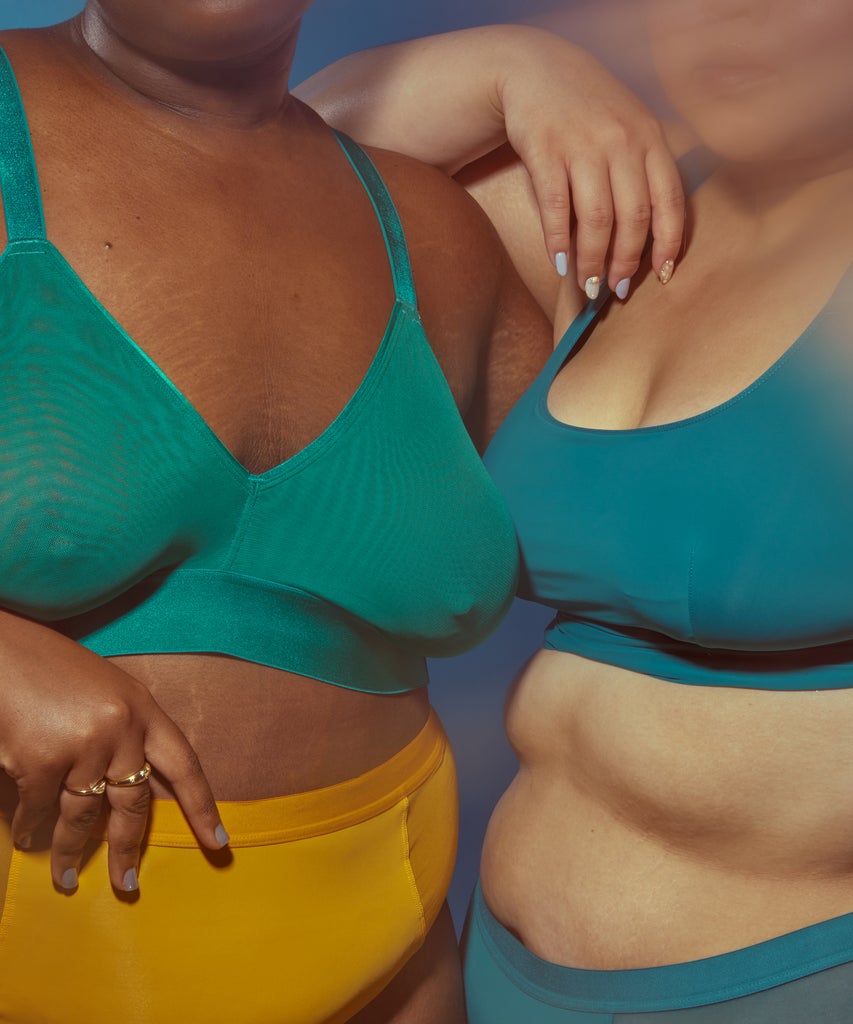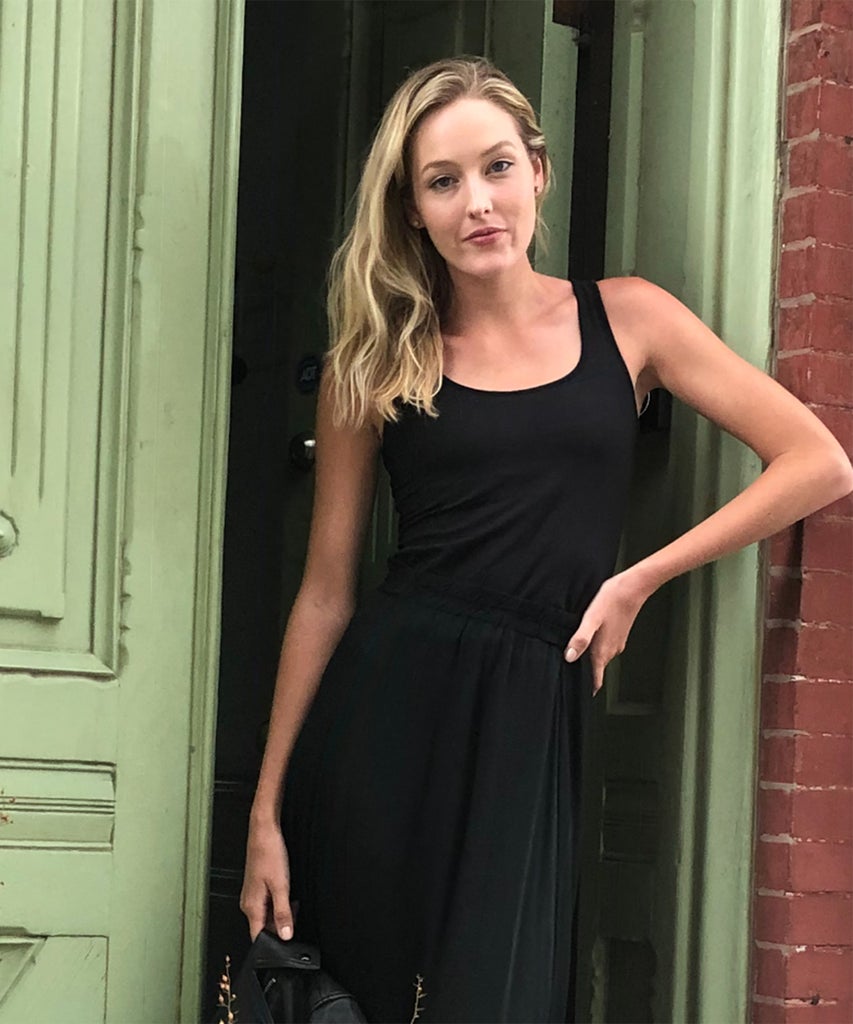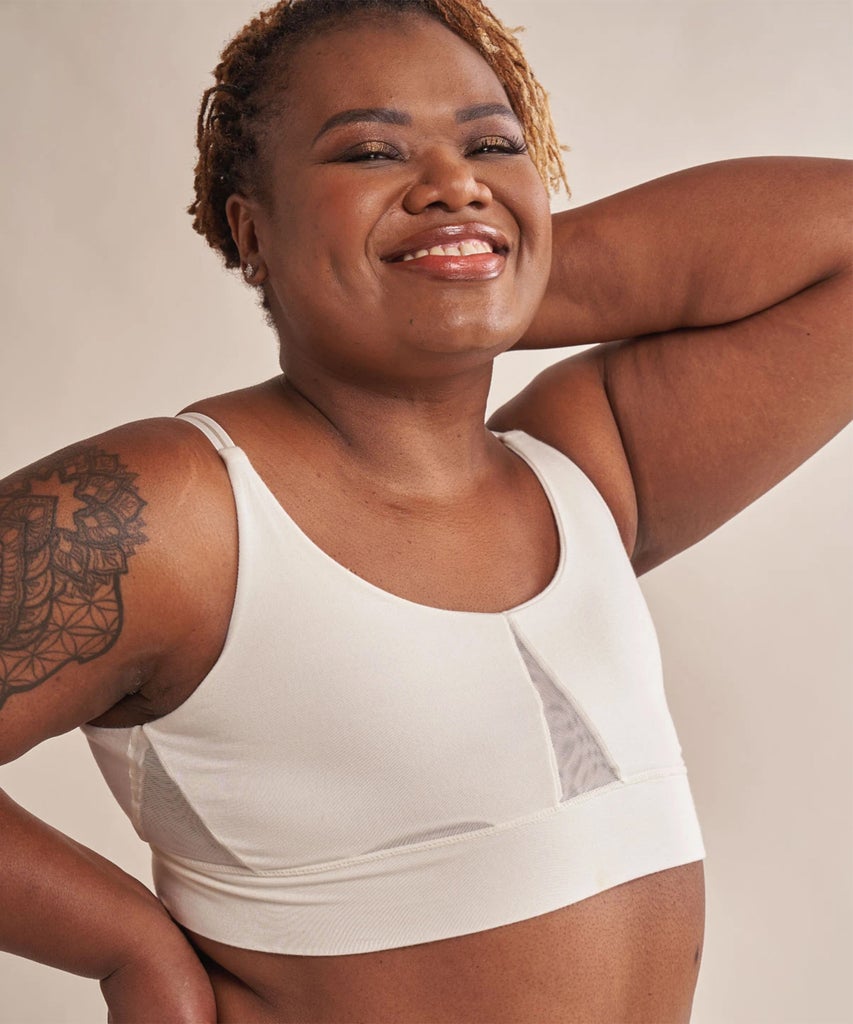
Before the start of the pandemic, Rosy Alvarez was already sick of wearing bras. They were too tight on her rib cage and incredibly uncomfortable, sometimes painful after a long day of work. Although she had gotten her bust measured for the appropriate bra size, she could never quite find one that fit properly.
Now Alvarez has decided to ditch them altogether — and has no plan to go back to fastening one on every morning. “There’s no reason to wear them,” the 25-year-old Brooklynite says.
The pandemic has been a period of personal reckoning. We’re questioning old habits, traditions, and systems that no longer serve us For many women, the idea of wearing a tight-fitting, pain-inducing contraption made of wire and padding is one that’s stopped making sense. Some, like Alvarez, have closed their bra drawers for good, while others are looking for new ways to add support to their boobs. And brands are meeting them halfway.
Although people are not going out as much as they once did, and attending Zoom meetings does not require a bra, consumer desire for bust support hasn’t waned so much as it’s changed. Demand for less constricting bralettes has grown significantly higher than for push-up and wired bras since 2019, according to the market research firm Edited. The scales have tipped to the point where bralettes and sports bras make up the majority of women’s undergarments in the United States and the United Kingdom.
“So much of this is driven by consumer choice,” says Deirdre Clemente, a fashion historian and associate professor at the University of Nevada, Las Vegas. “Things get shuffled out of the American wardrobe because the social benefits of wearing them fade enough for you to put your own preferences forward.”
The pandemic is only the tipping point. The past decade has seen a sea change that dictated the future of the garment. Once the ultimate sensual fantasy on the Victoria’s Secret runway, it has re-emerged as a comfy basic available to every skin tone, size, and shape thanks to inclusive brands like Savage x Fenty and Skims.
The bra entered the limelight in the 1920s, when stiff brassieres became a piece separate from the corsets and girdles worn by women in the previous century. It wasn’t until the sexual revolution of the mid-20th century, though, that the bra as we know it was born. The new wave of bras were less barrier-like than their stiff predecessors. “It’s a lot easier to get a hand under [a bra] than a girdle,” says Clemente. By the 1970s and 1980s, the fitness craze and new fabric technologies gave rise to the sports bra, which, according to Clemente, was first made from two men’s jockstraps by a runner who wanted support practicing during her runs. The heavy sexualization of the bra came in the late 1990s and early 2000s, with the rise of Victoria’s Secret’s fashion show and its collective of “angels,” as the super-thin models were called. “It’s a lifestyle, it’s Gisele Bundchen with wings on her back,” says Clemente. “It’s the ‘fantasy bra.’ ”
The story has changed dramatically thanks to calls for inclusion over the past decade. With Rihanna’s Savage x Fenty leading the pack of modern underwear lines, a new set of priorities and values helped reinvent the bra into something accessible and user-friendly. The launch of Savage x Fenty and its subsequent fashion shows, which are now streamed on Amazon Prime, allowed individuals to rethink their relationship with lingerie brands, asking for less aspirational imagery, more inclusive sizing and styles, and an array of genderless items. The consumers clearly appreciated this new line of thinking: Savage x Fenty is now valued at $1 billion, according to Forbes.

As the pandemic changed our world, so did the need and uses for bras. “The idea that women aren’t interacting with the public changes the kind of undergarments they’re going to want,” says Clemente. “That’s just completely logical.” Last year, lifelong friends Gigi Kitei and Lisa Cook launched Free Reign, an apparel brand geared for smaller-busted women (sizes 32A to 36B) that sells tank tops with a built-in bra, made with sustainable yarn. Within a day, they had doubled their Kickstarter campaign goal of $10,000. “We were always frustrated with the awkward reality of not wanting to wear push-ups or artificial bras,” says Kitei. “There were not a lot of options for women like us who wanted comfort.” Much like a sports tank top, Free Reign’s Everyday Tank ($74) features thick straps and an inner bra with molded cups, as well as a knit-hem finish.
Clemente says that the new, mostly homebound, normal is a ripe time for women to experiment with going braless, and for brands like Free Reign to flourish. “We have a much higher tolerance for not trying to distort people’s bodies,” she says. But freeing the boob in a society that still punishes fat and bigger-chested women is not an equal-opportunity endeavor. Or at least, easier said than done. “There’s a lot of people that do use [bras] for comfort because they want to support their boobs,” says Clemente, adding that support doesn’t have to mean discomfort and distortion.
That’s where bralettes and sports bras come in, eating up a sizable portion of the undergarment market for the past few years. Brands like Eberjey, Commando, Intimissimi, Lively, Savage x Fenty, and AnaOno are filling the gap for consumers who want a bra that fits them, not society’s standards.

AnaOno’s founder Dana Donofree says that the brand is “boob-inclusive,” adding that their products are designed for people with “one breast, two breasts, no breasts or new breasts.” In the past decade, Donofree has grown AnaOno from a bra company to a brand that offers underwear, loungewear, and apparel, catering to this inclusive mission. She says that the market has slowly caught up with her innovative thinking, largely because more women are launching their own brands. “I always laugh because none of us were comfortable in a bra, to begin with,” she says. “We kept letting men design them for us. So, of course, we were uncomfortable.”
Still, with all the progress made in how breasts are catered to, Clemente warns that the bigger problem is a societal conditioning to seeing “young perky boobs.”
Alvarez says she never stopped to question the bra in the 14 years since her mother gave her one. “It was a symbol of ‘Hey, you are starting to get boobs, you should wear this,’” she says. “And we never had a conversation about it.” Now, she’s rethinking her relationship to the bra. As a small-chested woman, she’s realized she has no true reason for a bra. “If there’s no functional purpose or if they’re not relieving an issue, then there is no need for them.”
Her journey to go braless did come with some awkward moments. Even converting to bralettes made her feel “nude and exposed.” But, eventually, she learned how to navigate fashion to give her confidence while going braless, no matter other people’s perceptions. But the defining moment was admitting to herself that she just enjoyed the feeling of going unfettered. “I love it so much,” she says. “I don’t see myself going back.”
Like what you see? How about some more R29 goodness, right here?
A Guide To Buying Your Perfect Bra Online
Inside Reddit’s Most Popular Bra Community
Victoria’s Secret Rebrands With New Ambassadors
from Refinery29 https://ift.tt/2VjKJ3X
via IFTTT
